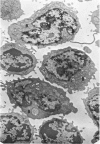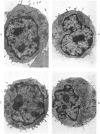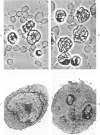Abstract
The transforming cells that appear in the efferent lymph from a lymph node responding to an antigenic challenge are part of a heterogeneous population which changes as the response progresses. Some cells containing small amounts of antibody appear early in the response and these cells have the cytologic characteristics of small and medium lymphocytes. They are, however, actively synthesizing DNA. As the immune response progresses, the antibody content of the cells in lymph increases. When incubated in vitro, cells in lymph appearing late in the response released 20 times more antibody per cell than those appearing early in the response. Large blast cells are the predominant antibody-forming cell in lymph. At the peak of a secondary challenge with horseradish peroxidase, up to 40% of the cells in lymph may be blast cells and, of these, two-thirds may contain specific antibody. It seems probable that most if not all of the blast cells responding to the antigen are involved directly in antibody and DNA synthesis. Cells in all stages of ultrastructural differentiation, and even mature plasma cells, were found to incorporate 3H-thymidine into their nuclear DNA.
Full text
PDF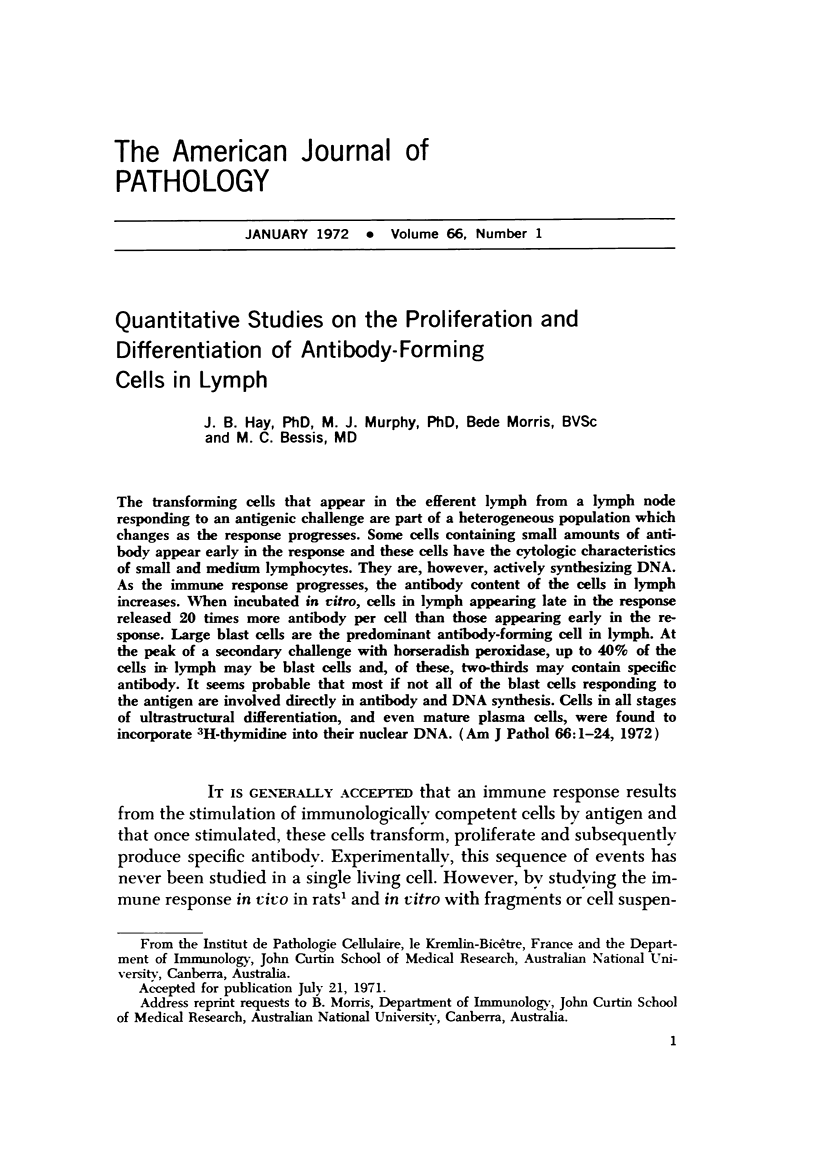

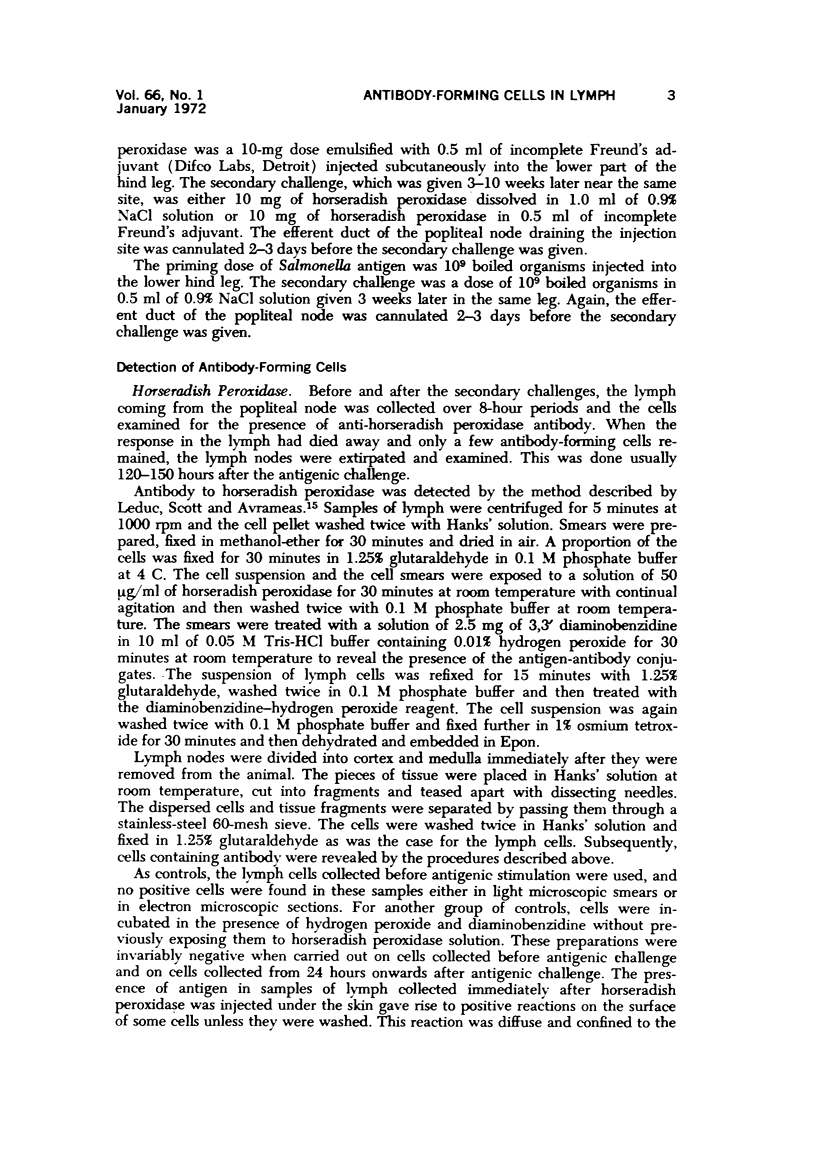

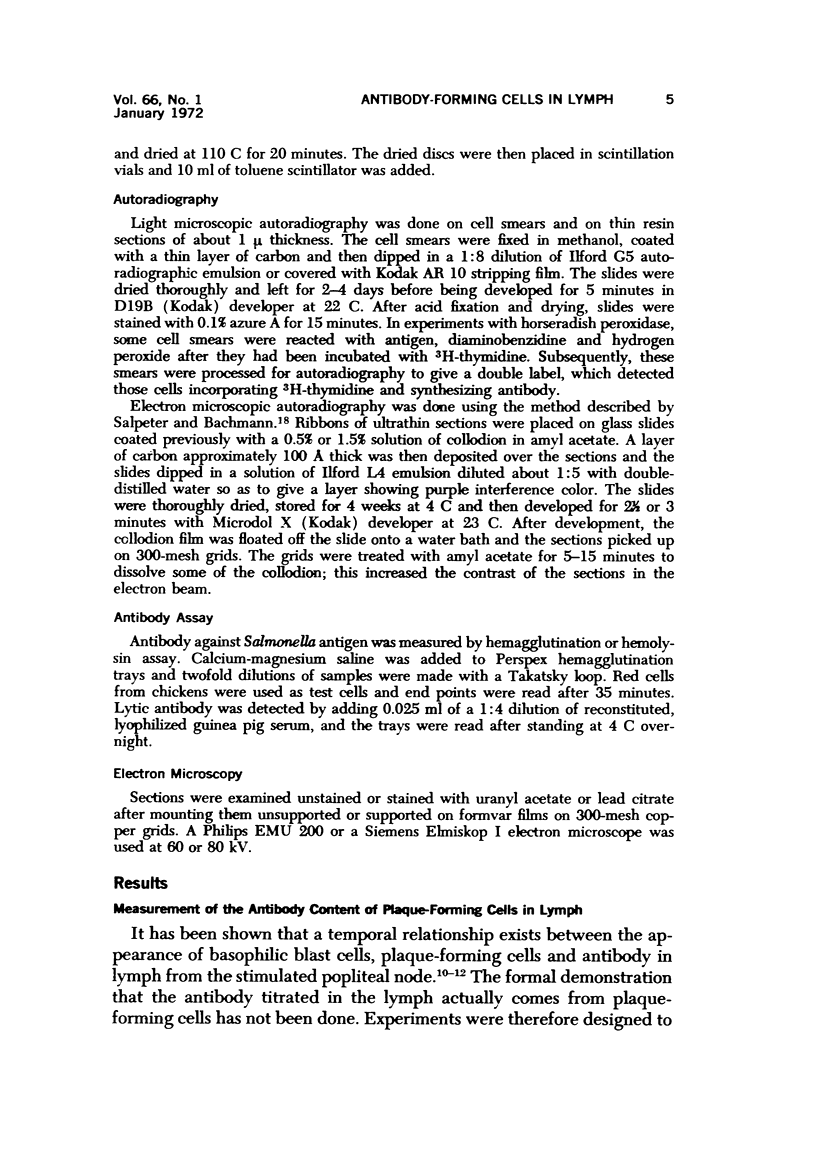
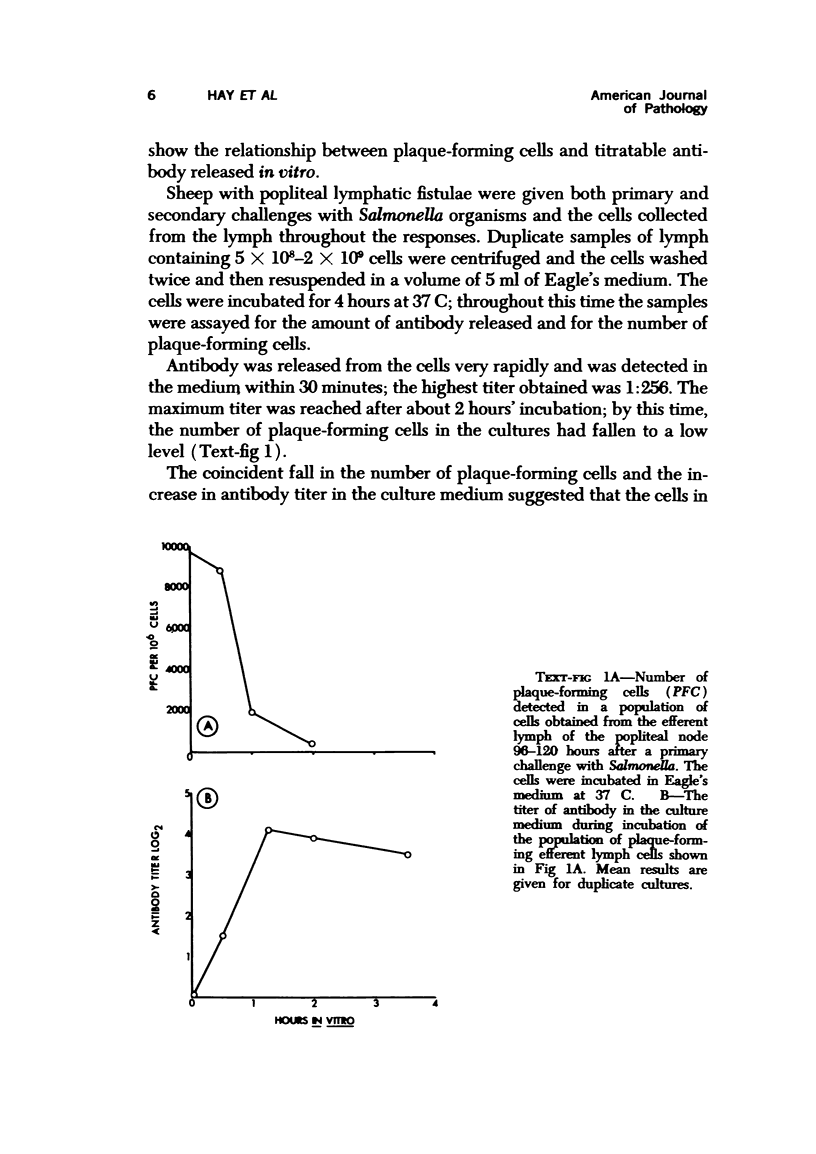
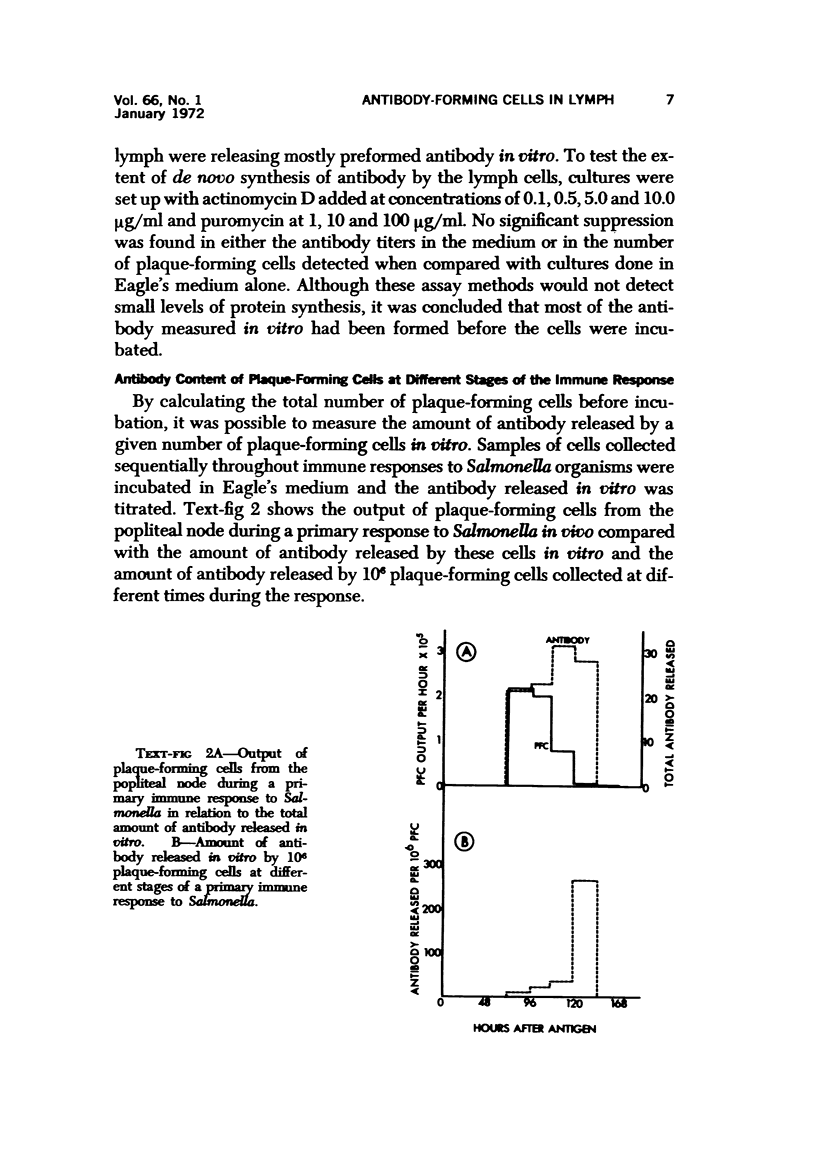



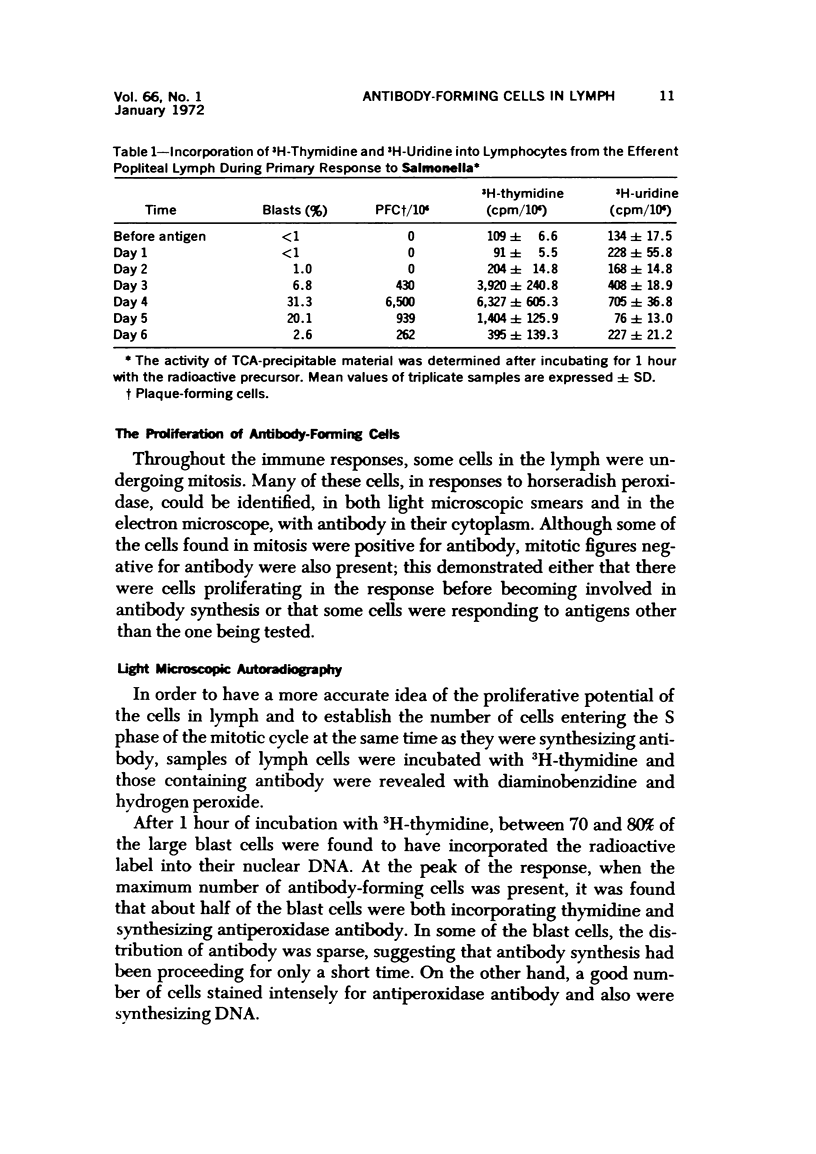

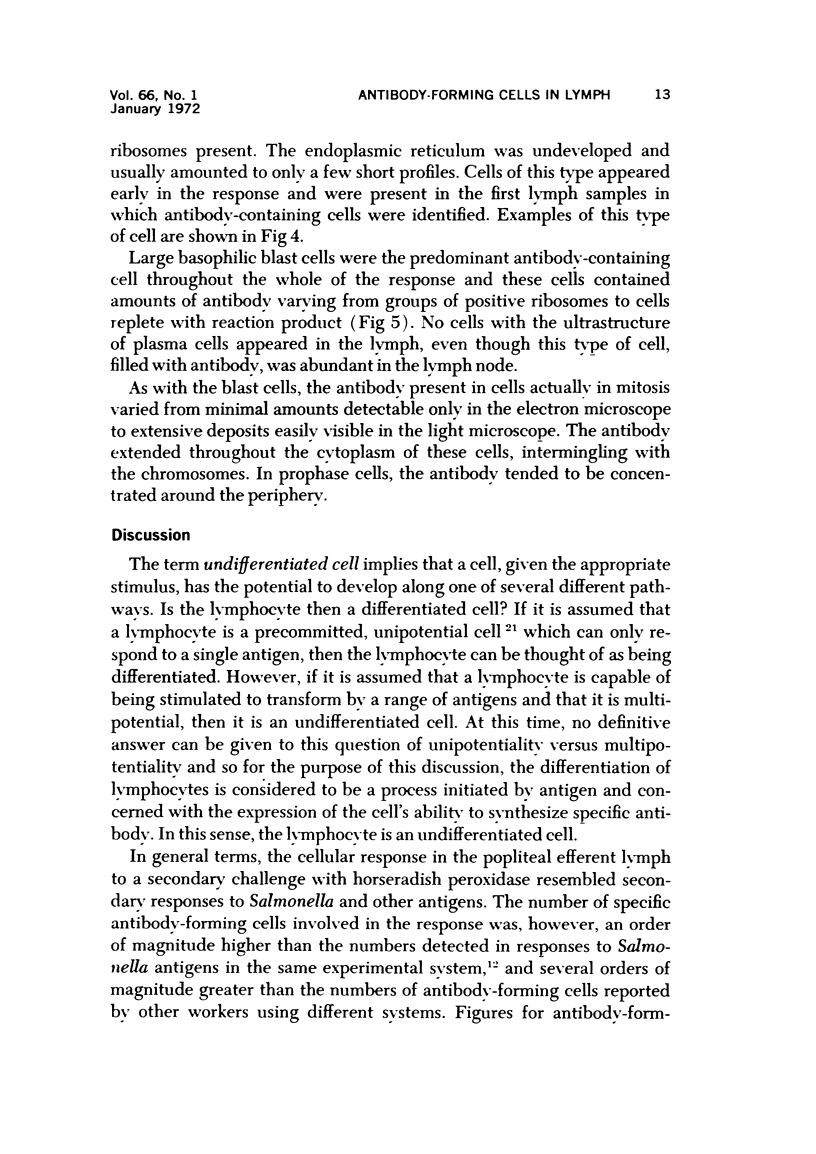
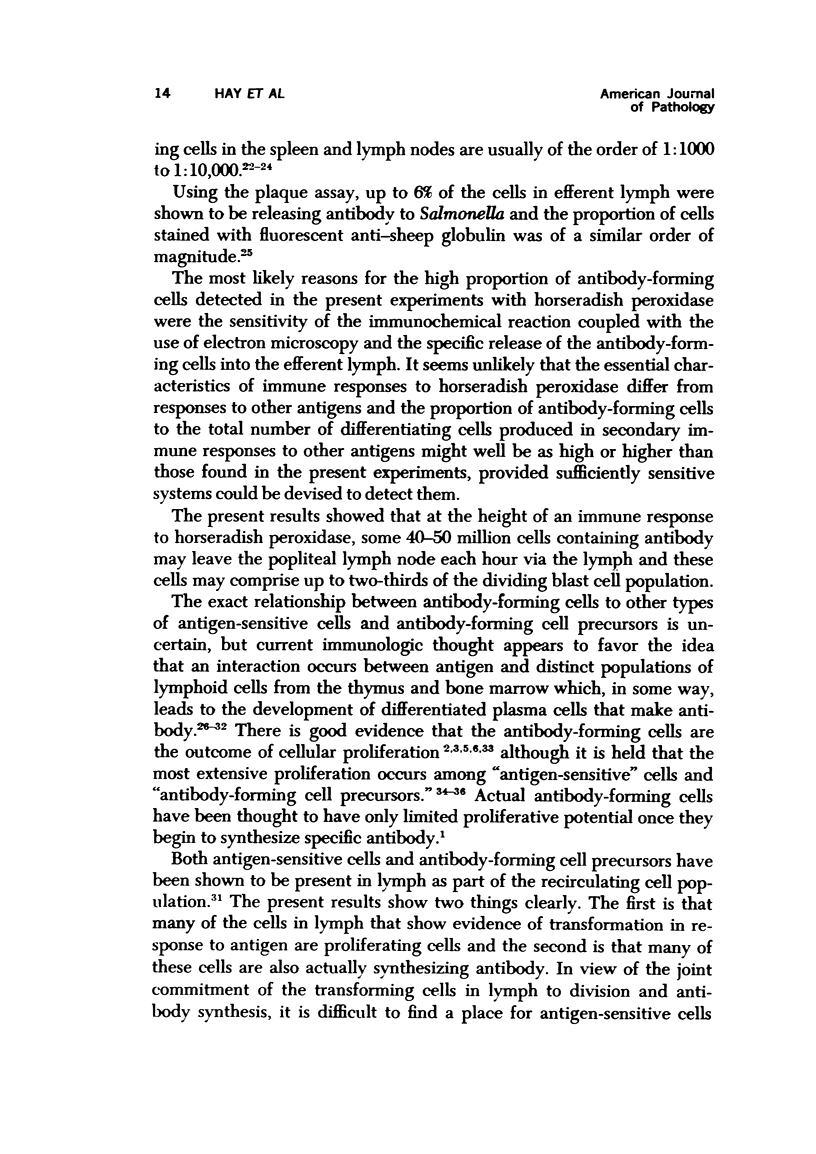
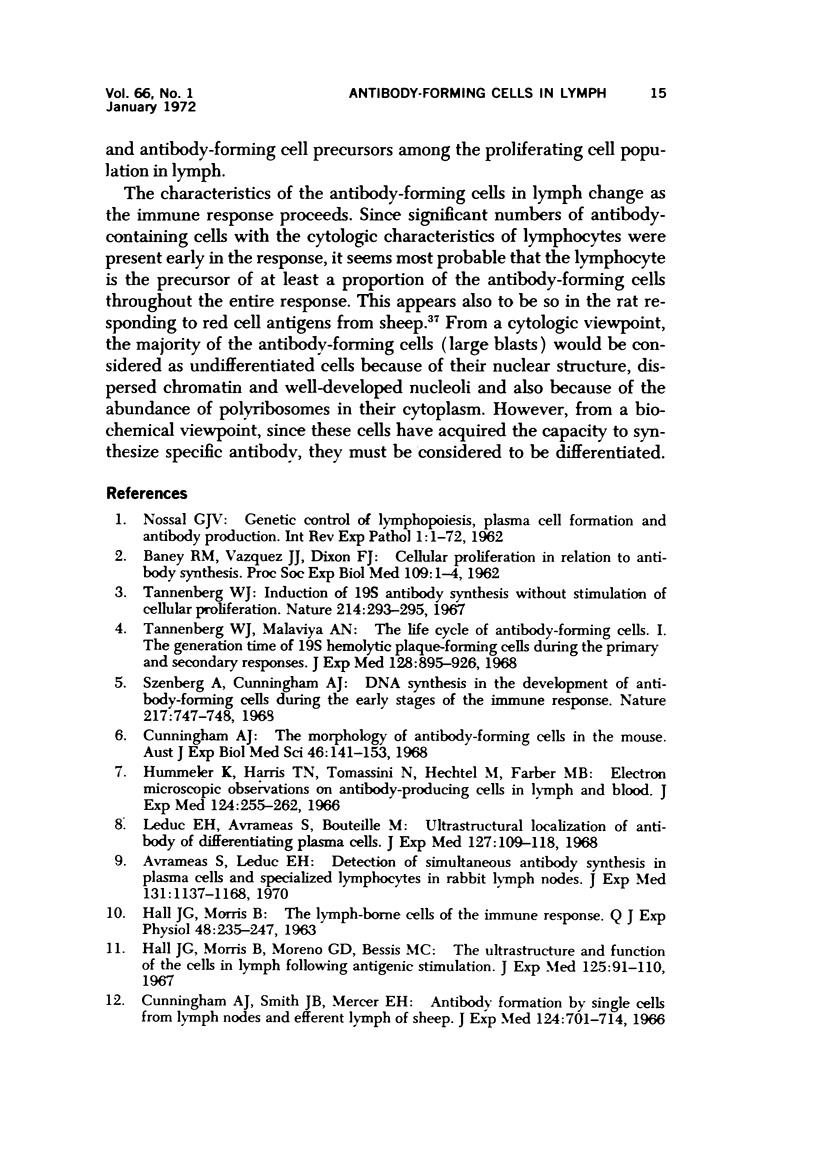
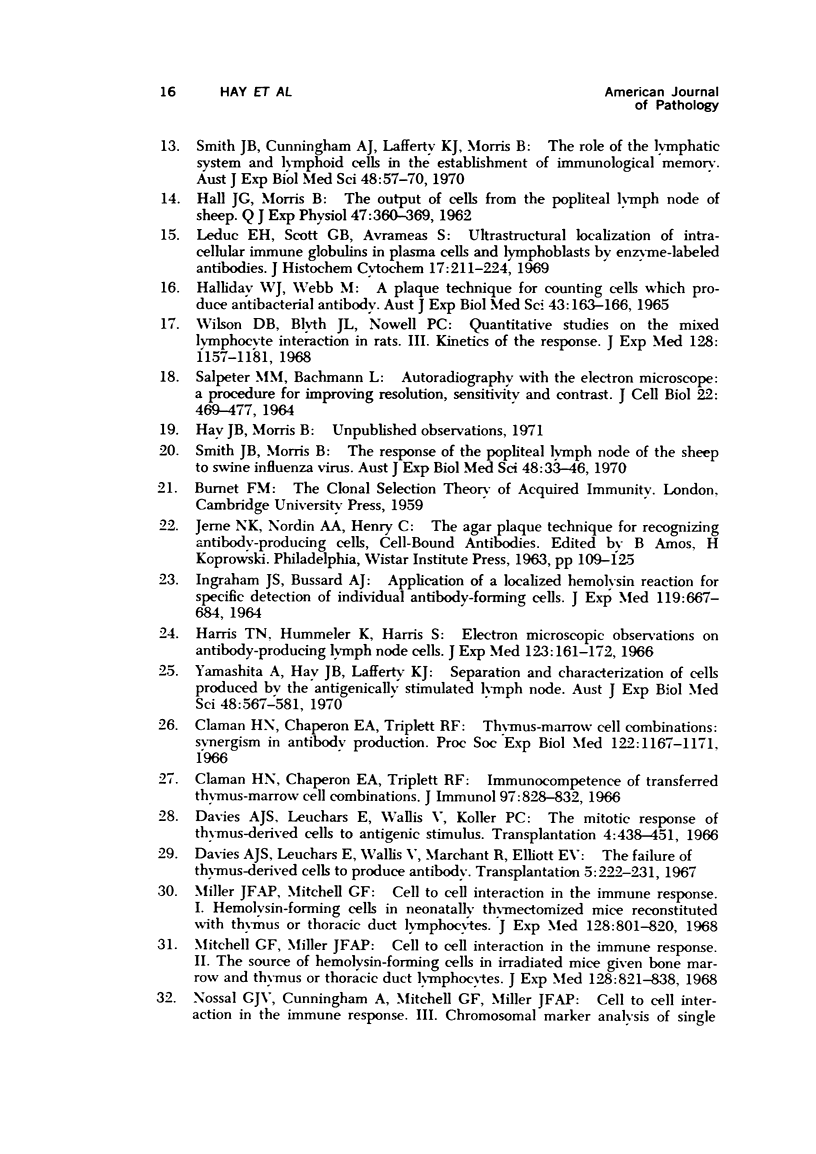
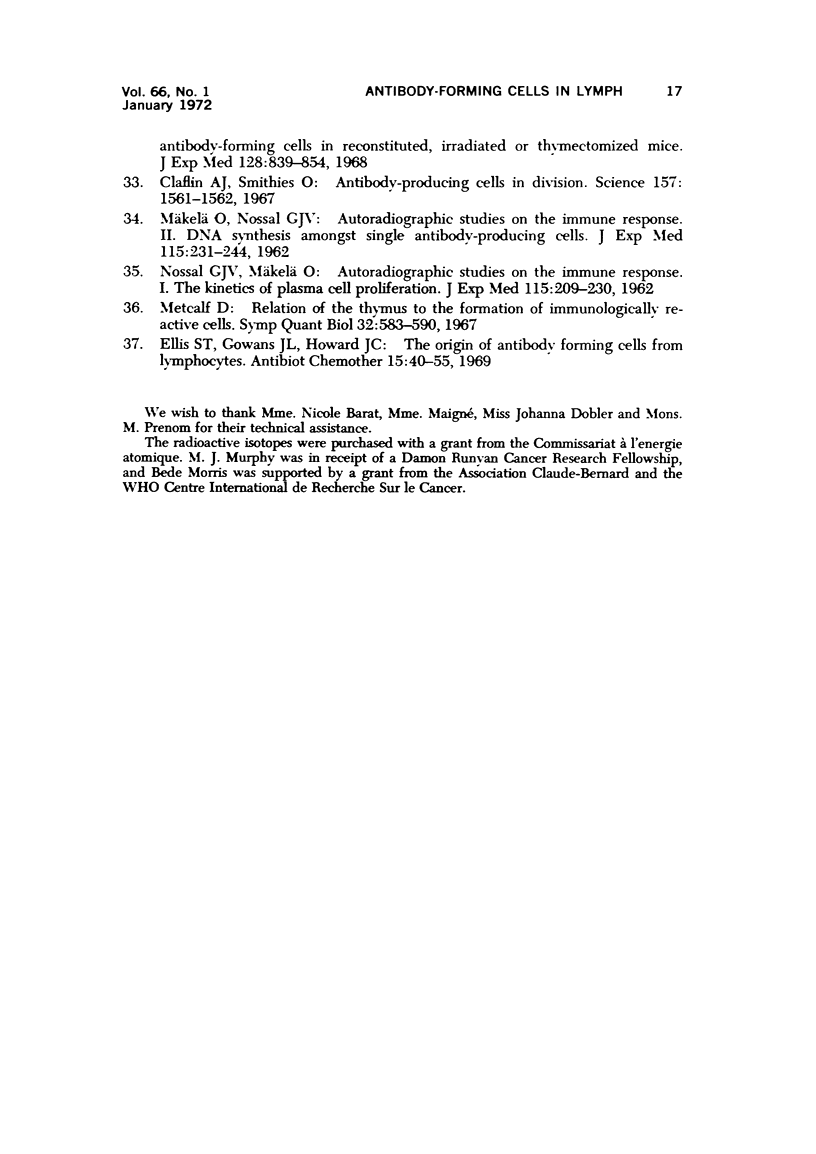
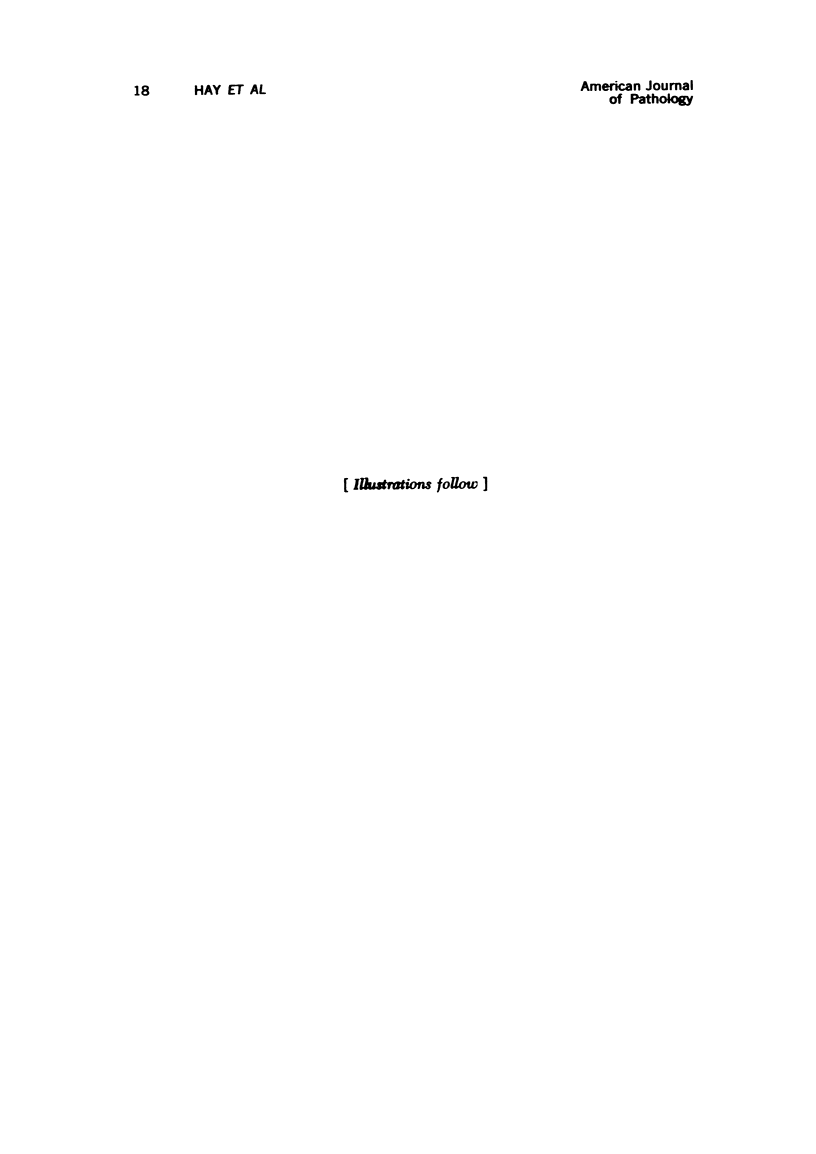
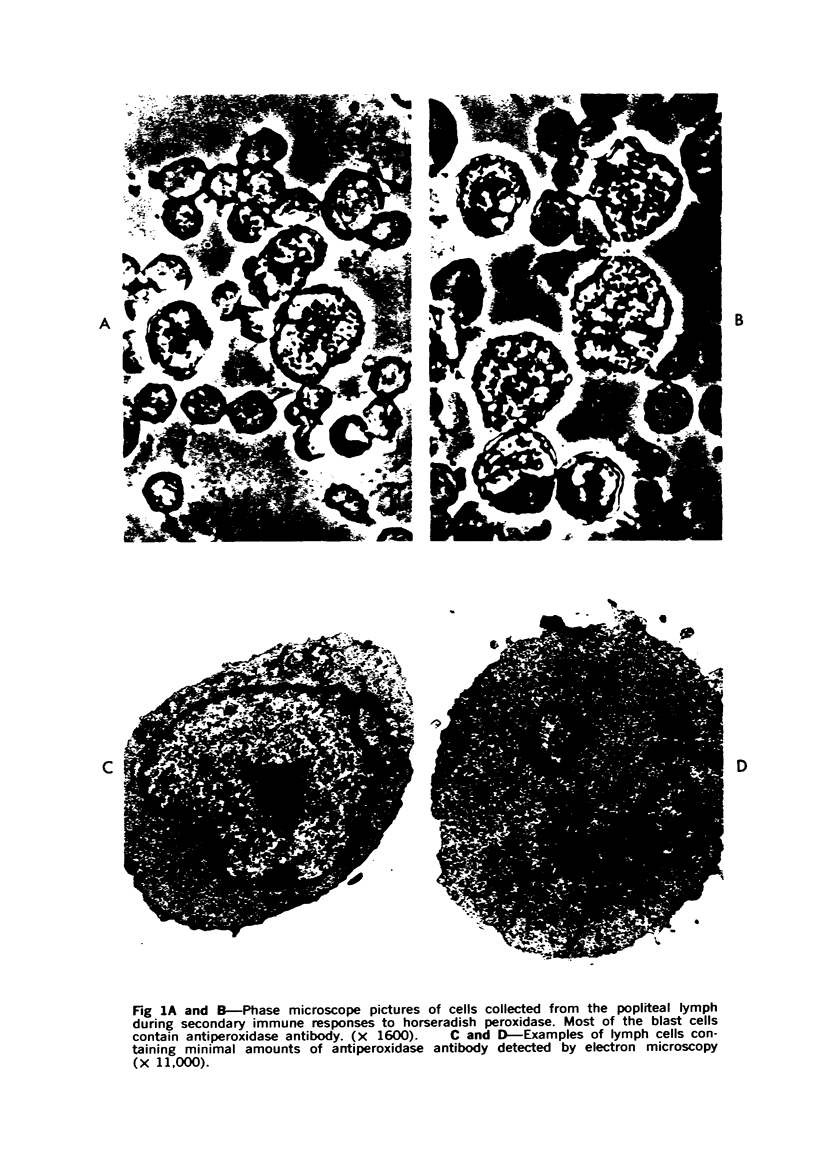
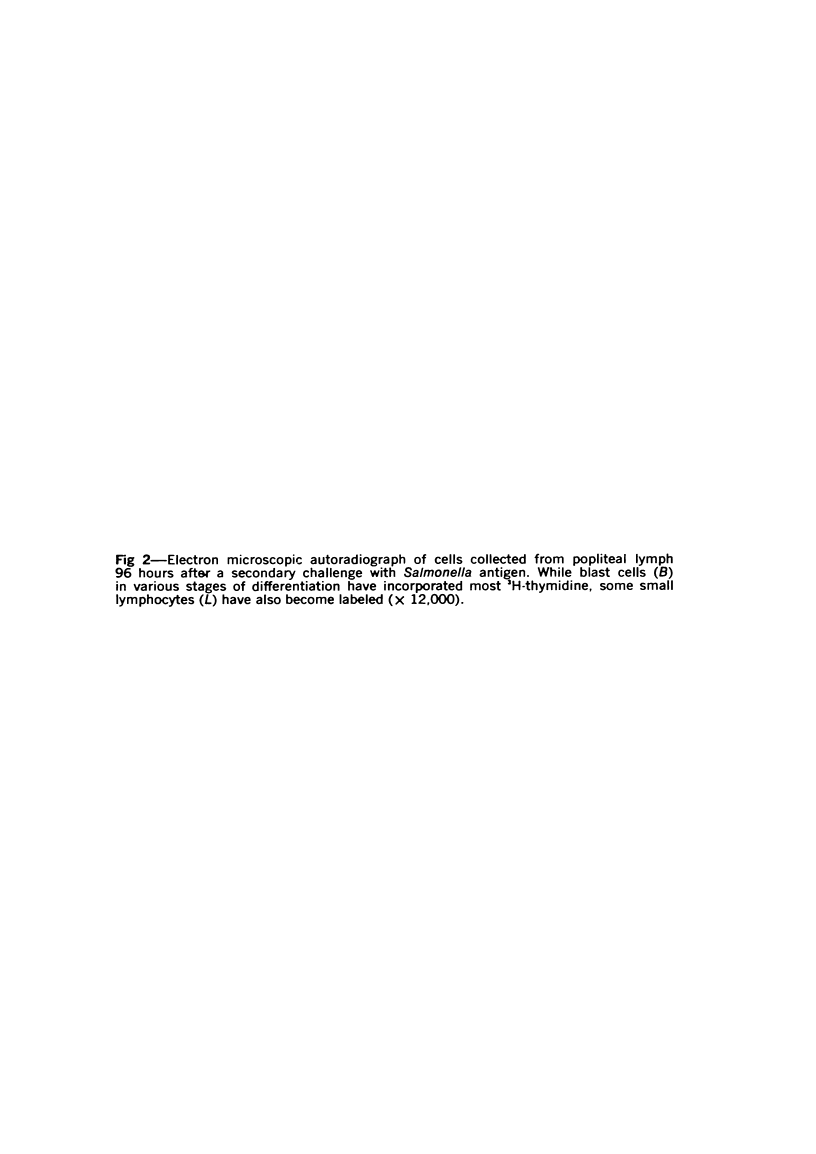



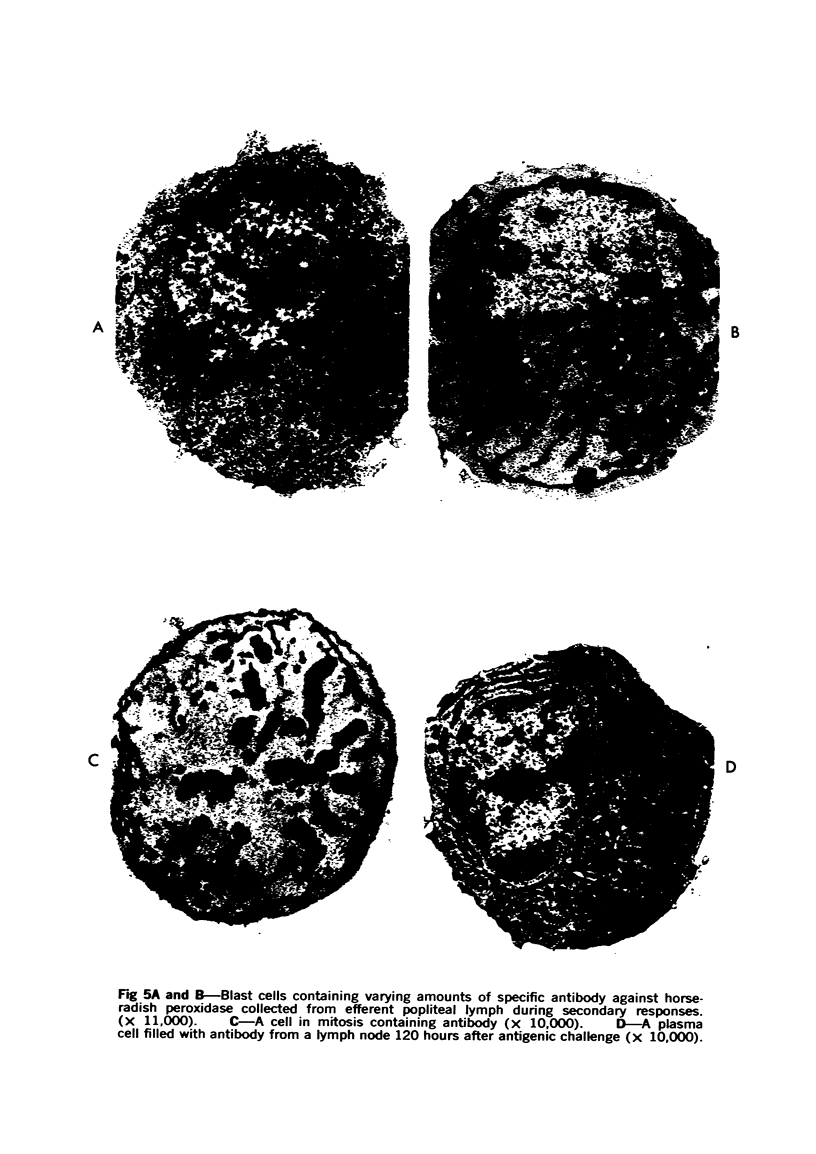
Images in this article
Selected References
These references are in PubMed. This may not be the complete list of references from this article.
- Avrameas S., Leduc E. H. Detection of simultaneous antibody synthesis in plasma cells and specialized lymphocytes in rabbit lymph nodes. J Exp Med. 1970 Jun 1;131(6):1137–1168. doi: 10.1084/jem.131.6.1137. [DOI] [PMC free article] [PubMed] [Google Scholar]
- BANEY R. N., VAZQUEZ J. J., DIXON F. J. Cellular proliferation in relation to antibody synthesis. Proc Soc Exp Biol Med. 1962 Jan;109:1–4. doi: 10.3181/00379727-109-27083. [DOI] [PubMed] [Google Scholar]
- Claflin A. J., Smithies O. Antibody-producing cells in division. Science. 1967 Sep 29;157(3796):1561–1562. [PubMed] [Google Scholar]
- Claman H. N., Chaperon E. A., Triplett R. F. Immunocompetence of transferred thymus-marrow cell combinations. J Immunol. 1966 Dec;97(6):828–832. [PubMed] [Google Scholar]
- Claman H. N., Chaperon E. A., Triplett R. F. Thymus-marrow cell combinations. Synergism in antibody production. Proc Soc Exp Biol Med. 1966 Aug-Sep;122(4):1167–1171. doi: 10.3181/00379727-122-31353. [DOI] [PubMed] [Google Scholar]
- Cunningham A. J., Smith J. B., Mercer E. H. Antibody formation by single cells from lymph nodes and efferent lymph of sheep. J Exp Med. 1966 Oct 1;124(4):701–714. doi: 10.1084/jem.124.4.701. [DOI] [PMC free article] [PubMed] [Google Scholar]
- Cunningham A. J. The morphology of antibody-forming cells in the mouse. Aust J Exp Biol Med Sci. 1968 Apr;46(2):141–153. doi: 10.1038/icb.1968.12. [DOI] [PubMed] [Google Scholar]
- Davies A. J., Leuchars E., Wallis V., Koller P. C. The mitotic response of thymus-derived cells to antigenic stimulus. Transplantation. 1966 Jul;4(4):438–451. doi: 10.1097/00007890-196607000-00008. [DOI] [PubMed] [Google Scholar]
- Ellis S. T., Gowans J. L., Howard J. C. The origin of antibody forming cells from lymphocytes. Antibiot Chemother. 1969;15:40–55. doi: 10.1159/000386770. [DOI] [PubMed] [Google Scholar]
- HALLIDAY W. J., WEBB M. A PLAQUE TECHNIQUE FOR COUNTING CELLS WHICH PRODUCE ANTIBACTERIAL ANTIBODY. Aust J Exp Biol Med Sci. 1965 Apr;43:163–166. doi: 10.1038/icb.1965.13. [DOI] [PubMed] [Google Scholar]
- HALL J. G., MORRIS B. The lymph-borne cells of the immune response. Q J Exp Physiol Cogn Med Sci. 1963 Jul;48:235–247. doi: 10.1113/expphysiol.1963.sp001660. [DOI] [PubMed] [Google Scholar]
- HALL J. G., MORRIS B. The output of cells in lymph from the popliteal node of sheep. Q J Exp Physiol Cogn Med Sci. 1962 Oct;47:360–369. doi: 10.1113/expphysiol.1962.sp001620. [DOI] [PubMed] [Google Scholar]
- Hall J. G., Morris B., Moreno G. D., Bessis M. C. The ultrastructure and function of the cells in lymph following antigenic stimulation. J Exp Med. 1967 Jan 1;125(1):91–110. doi: 10.1084/jem.125.1.91. [DOI] [PMC free article] [PubMed] [Google Scholar]
- Harris T. N., Hummeler K., Harris S. Electron microscopic observations on antibody-producing lymph node cells. J Exp Med. 1966 Jan 1;123(1):161–172. doi: 10.1084/jem.123.1.161. [DOI] [PMC free article] [PubMed] [Google Scholar]
- Hummeler K., Harris T. N., Tomassini N., Hechtel M., Farber M. B. Electron microscopic observations on antibody-producing cells in lymph and blood. J Exp Med. 1966 Aug 1;124(2):255–262. doi: 10.1084/jem.124.2.255. [DOI] [PMC free article] [PubMed] [Google Scholar]
- INGRAHAM J. S., BUSSARD A. APPLICATION OF A LOCALIZED HEMOLYSIN REACTION FOR SPECIFIC DETECTION OF INDIVIDUAL ANTIBODY-FORMING CELLS. J Exp Med. 1964 Apr 1;119:667–684. doi: 10.1084/jem.119.4.667. [DOI] [PMC free article] [PubMed] [Google Scholar]
- Leduc E. H., Avrameas S., Bouteille M. Ultrastructural localization of antibody in differentiating plasma cells. J Exp Med. 1968 Jan 1;127(1):109–118. doi: 10.1084/jem.127.1.109. [DOI] [PMC free article] [PubMed] [Google Scholar]
- Leduc E. H., Scott G. B., Avrameas S. Ultrastructural localization of intracellular immune globulins in plasma cells and lymphoblasts by enzyme-labeled antibodies. J Histochem Cytochem. 1969 Apr;17(4):211–224. doi: 10.1177/17.4.211. [DOI] [PubMed] [Google Scholar]
- MAKELA O., NOSSAL G. J. Autoradiographic studies on the immune response. II. DNA synthesis amongst single antibody-producing cells. J Exp Med. 1962 Jan 1;115:231–244. doi: 10.1084/jem.115.1.231. [DOI] [PMC free article] [PubMed] [Google Scholar]
- Miller J. F., Mitchell G. F. Cell to cell interaction in the immune response. I. Hemolysin-forming cells in neonatally thymectomized mice reconstituted with thymus or thoracic duct lymphocytes. J Exp Med. 1968 Oct 1;128(4):801–820. doi: 10.1084/jem.128.4.801. [DOI] [PMC free article] [PubMed] [Google Scholar]
- Mitchell G. F., Miller J. F. Cell to cell interaction in the immune response. II. The source of hemolysin-forming cells in irradiated mice given bone marrow and thymus or thoracic duct lymphocytes. J Exp Med. 1968 Oct 1;128(4):821–837. doi: 10.1084/jem.128.4.821. [DOI] [PMC free article] [PubMed] [Google Scholar]
- NOSSAL G. J. Genetic control of lymphopoiesis, plasma cell formation, and antibody production. Int Rev Exp Pathol. 1962;1:1–72. [PubMed] [Google Scholar]
- NOSSAL G. J., MAKELA O. Autoradiographic studies on the immune response.I. The kinetics of plasma cell proliferation. J Exp Med. 1962 Jan 1;115:209–230. doi: 10.1084/jem.115.1.209. [DOI] [PMC free article] [PubMed] [Google Scholar]
- SALPETER M. M., BACHMANN L. AUTORADIOGRAPHY WITH THE ELECTRON MICROSCOPE. A PROCEDURE FOR IMPROVING RESOLUTION, SENSITIVITY, AND CONTRAST. J Cell Biol. 1964 Aug;22:469–477. doi: 10.1083/jcb.22.2.469. [DOI] [PMC free article] [PubMed] [Google Scholar]
- Smith J. B., Cunningham A. J., Lafferty K. J., Morris B. The role of the lymphatic system and lymphoid cells in the establishment of immunological memory. Aust J Exp Biol Med Sci. 1970 Feb;48(1):57–70. doi: 10.1038/icb.1970.6. [DOI] [PubMed] [Google Scholar]
- Smith J. B., Morris B. The response of the popliteal lymph node of the sheep to swine influenza virus. Aust J Exp Biol Med Sci. 1970 Feb;48(1):33–46. doi: 10.1038/icb.1970.4. [DOI] [PubMed] [Google Scholar]
- Szenberg A., Cunningham A. J. DNA synthesis in the development of antibody-forming cells during the early stages of the immune response. Nature. 1968 Feb 24;217(5130):747–748. doi: 10.1038/217747a0. [DOI] [PubMed] [Google Scholar]
- Tannenberg W. J. Induction of 19S antibody synthesis without stimulation of cellular proliferation. Nature. 1967 Apr 15;214(5085):293–295. doi: 10.1038/214293a0. [DOI] [PubMed] [Google Scholar]
- Tannenberg W. J., Malaviya A. N. The life cycle of antibody-forming cells. I. The generation time of 19S hemolytic plaque-forming cells during the primary and secondary responses. J Exp Med. 1968 Nov 1;128(5):895–925. doi: 10.1084/jem.128.5.895. [DOI] [PMC free article] [PubMed] [Google Scholar]
- Wilson D. B., Blyth JL NOWELL P. C. Quantitative studies on the mixed lymphocyte interaction in rats. 3. Kinetics of the response. J Exp Med. 1968 Nov 1;128(5):1157–1181. doi: 10.1084/jem.128.5.1157. [DOI] [PMC free article] [PubMed] [Google Scholar]



